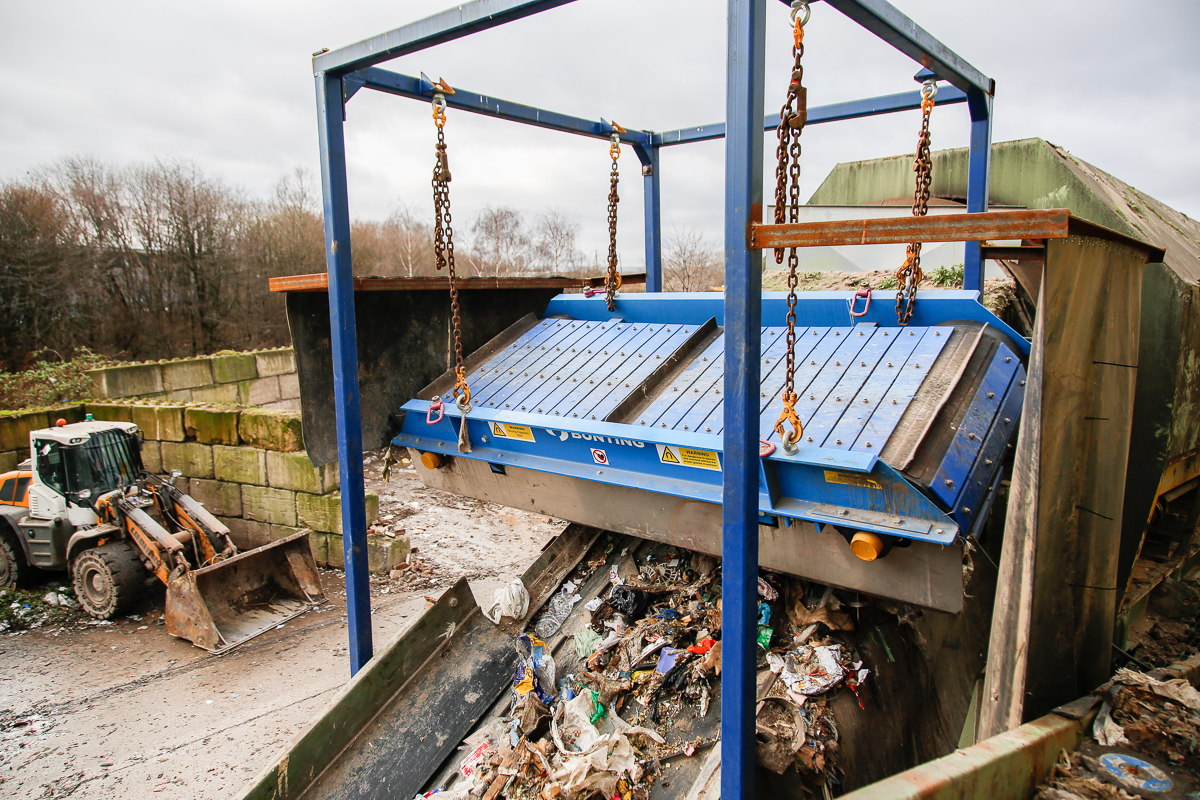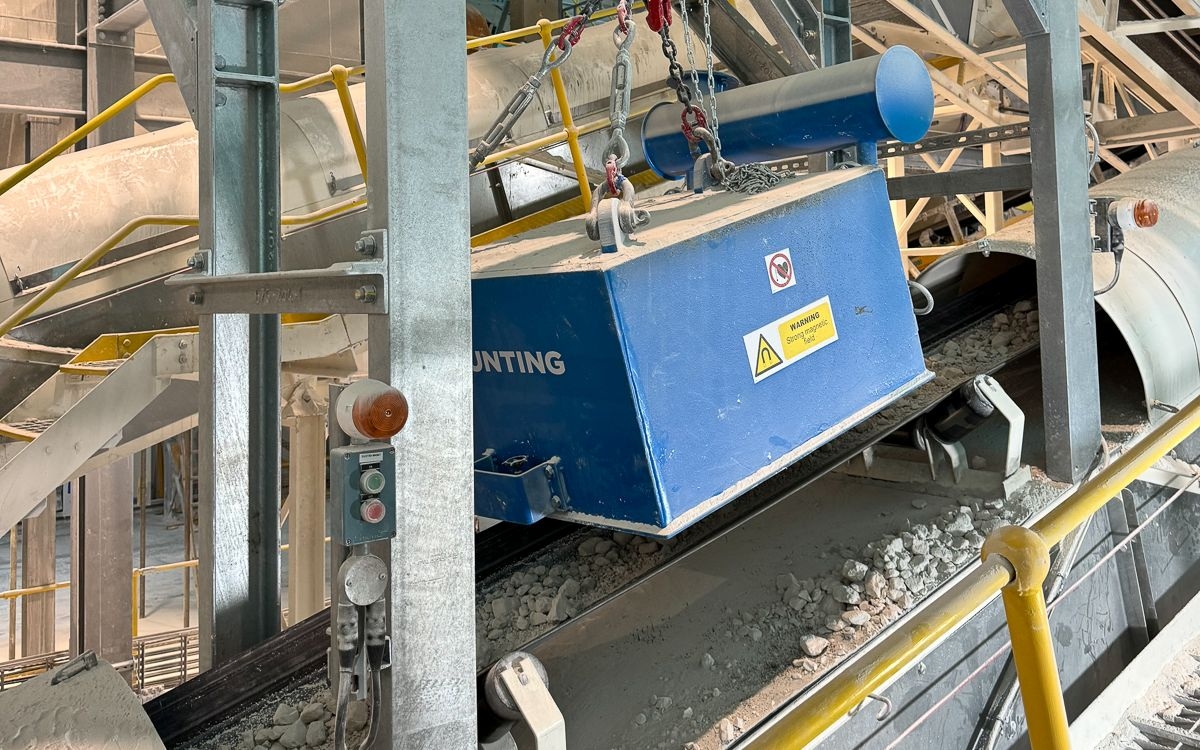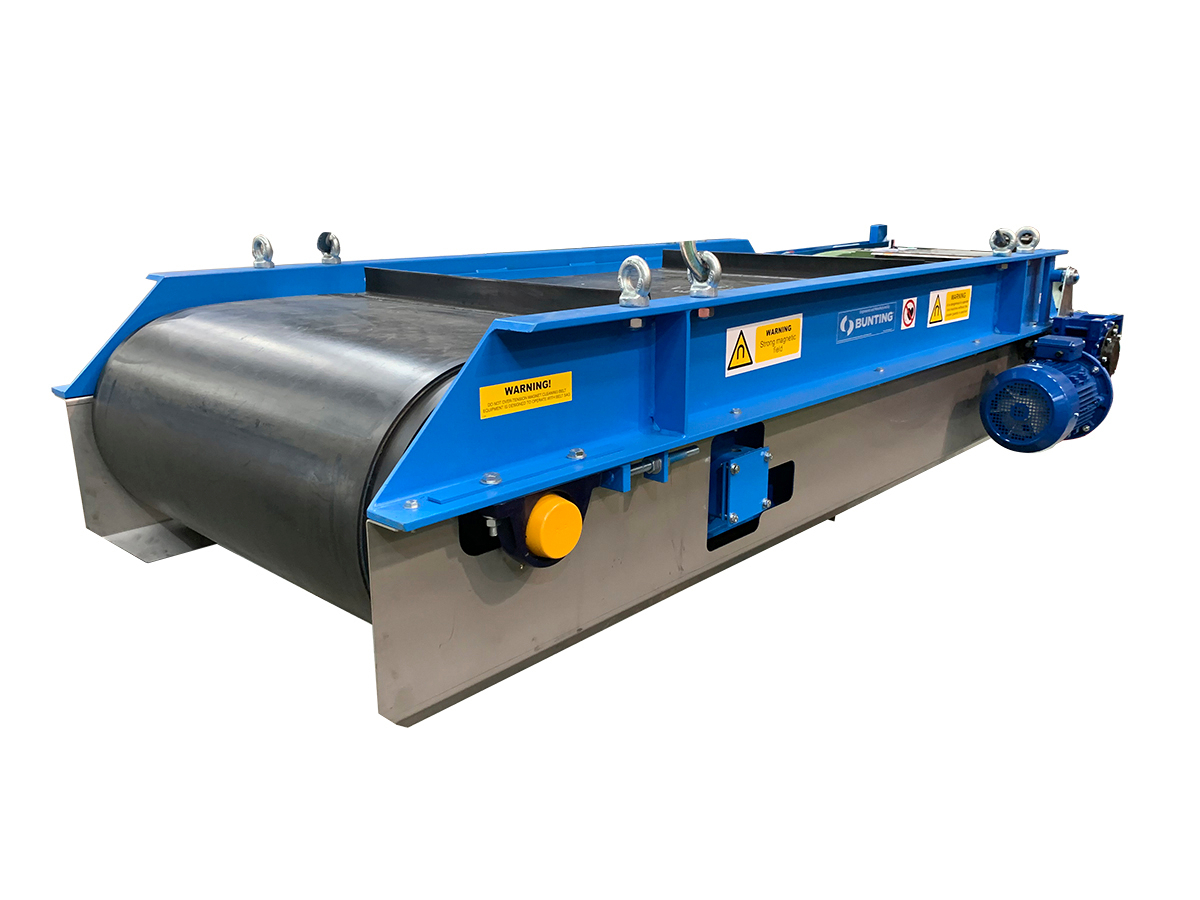Bunting ElectroMax-Plus protects aggregate crushers
11.07.2024A UK construction materials company installed an ElectroMax-Plus Overband Magnet to remove tramp ferrous metal from quarried material prior to crushing. Bunting specified, designed and built the powerful electromagnetic Overband Magnet at their UK manufacturing facility in Redditch.
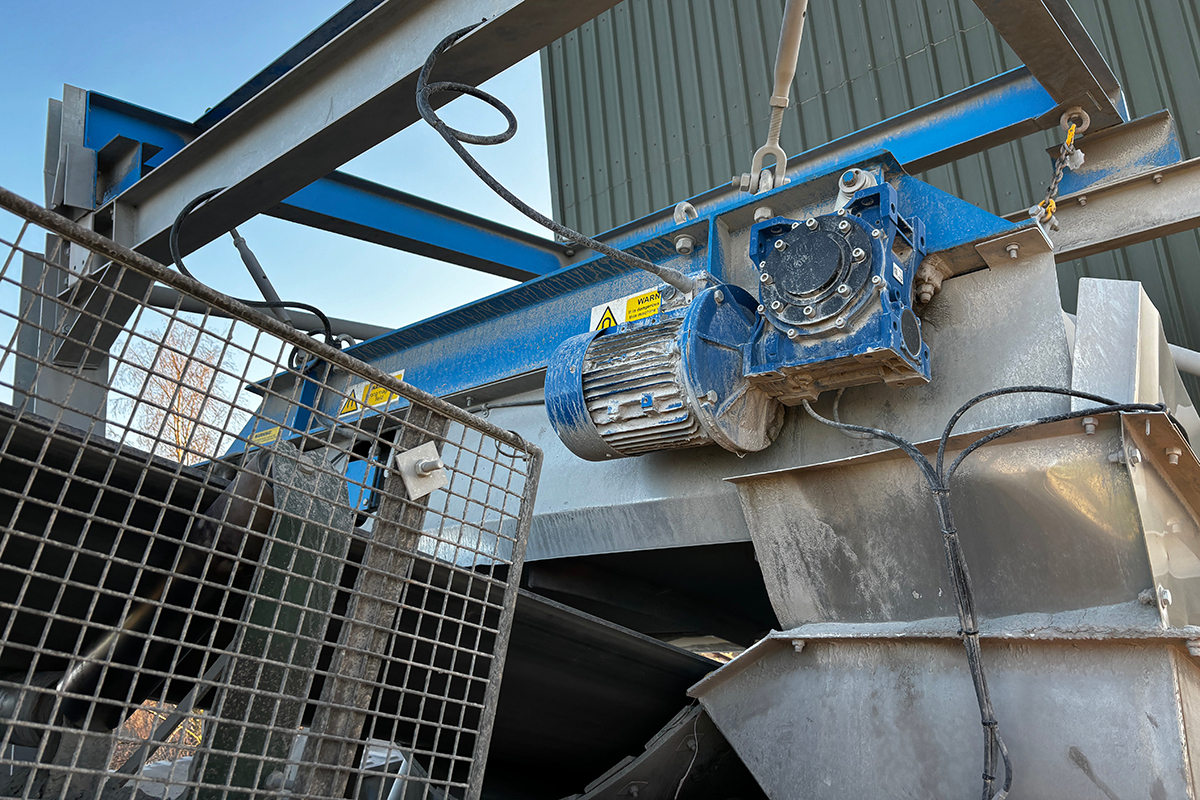 ElectroMax-Plus Overband Magnet installed
ElectroMax-Plus Overband Magnet installed
© Bunting
The ElectroMax-Plus Overband Magnet is installed at magnesium limestone quarry in Derbyshire, United Kingdom. The rock is crushed, screened and sized for use in the production of refractory bricks, road aggregate and other construction purposes.The powerful ElectroMax-Plus Overband Magnet lifts and automatically discards tramp ferrous metal present in the conveyed quarried rock prior to the crushing and screening process.
For this installation Bunting supplied a model EMAX-Plus 120 electro overband magnet. The ElectroMax and ElectroMax-Plus are lightweight and powerful electromagnetic overband magnets specifically designed for applications where space is limited or when extra separation power is required. The EMAX-Plus 120 has a self-cleaning belt, which rotates around the electromagnet to transfer and automatically discharges metal attracted up and onto the face of the magnet. The belt of the ElectroMax is driven and guided by two pulleys instead of four (as used for larger standard Electro Overband Magnets), reducing the overall weight and size. In addition, unlike other designs of electro overband magnets, the ElectroMax coil cooled by air, eliminating the need for any oil conservator tanks.
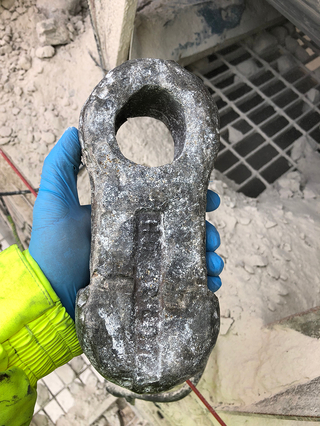 Tramp ferrous metal separated by the ElectroMax-Plus
Tramp ferrous metal separated by the ElectroMax-Plus
© Bunting
The EMAX-Plus 120 weighs 3.3 tonnes and is 2750 mm long, 1650 mm wide (including the belt drive motor) and 600 mm high. The 1200 mm wide electromagnet sits across the 800 mm wide material transport belt, providing enough space to transfer captured tramp ferrous metal away from the conveyor and into a separate collection chute.
On the site, the EMAX-Plus 120 is suspended at 500 mm above the surface of the belt conveyor. This ensures that there is enough space between the magnet face and the conveyed rock. The quarried rock lump size ranges between 150 and 300 mm, with a nominal burden depth of between 200 to 300 mm.
The ElectroMax-Plus is removing a wide range of ferrous detritus from the conveyor including large steel plates, wire, bars, and broken plant. Such tramp metal would cause significant and costly damage to crushers and screens, as well as production downtime. After catchment, the metal is discharged into a separate collection bay for safe disposal.
After the installation, the quarry manager expressed his surprise at the quantity of metal removed by the ElectroMax-Plus and is no longer concerned about potential plant damage and downtime.

